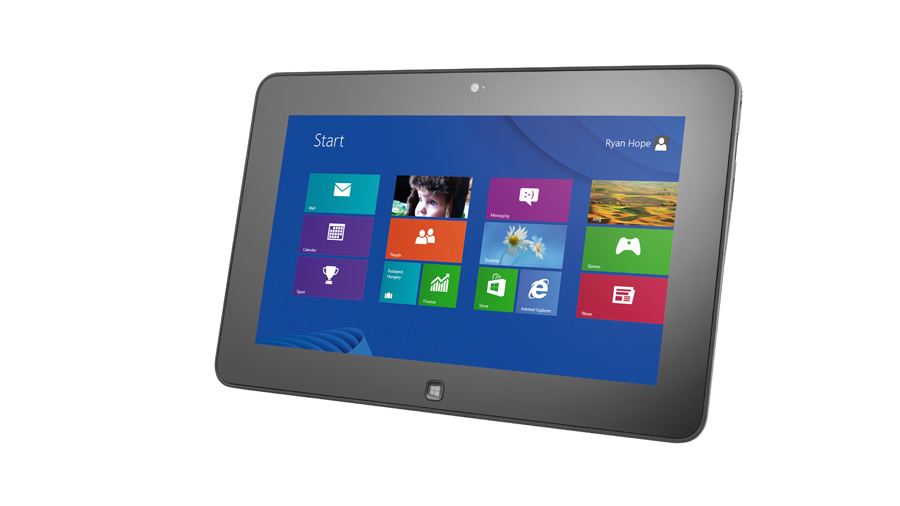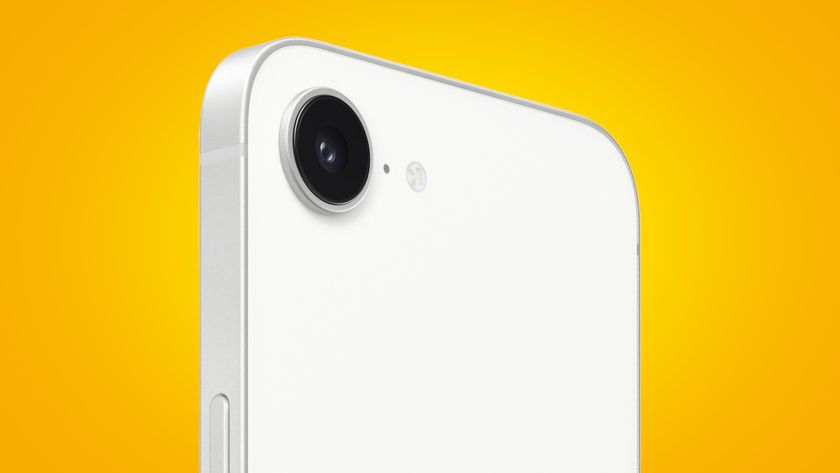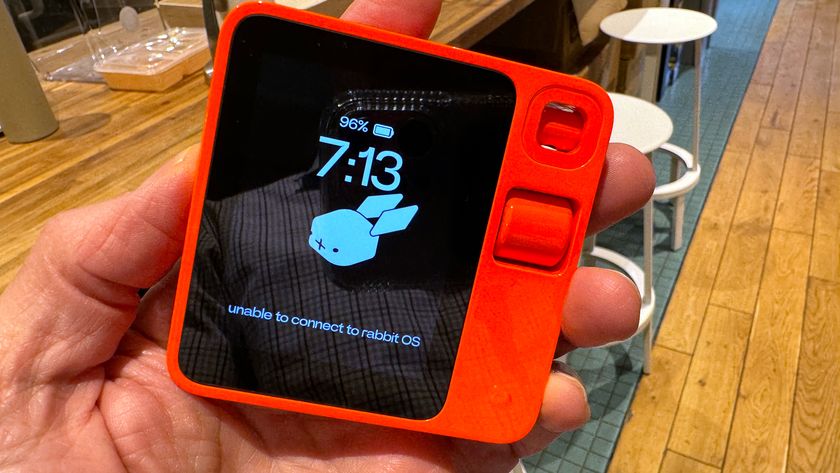TechRadar Verdict
The Latitude is no PC replacement, but it is handy as a second screen for social feeds or email. It's handy in meetings, too. It's particularly good for mobile working when you only need to check and write emails or give a quick presentation. The battery life is simply stunning.
Pros
- +
Full-fat Windows 8
- +
Removeable battery
- +
SSD storage
- +
2GB of RAM
- +
Connectivity
Cons
- -
Limited performance
- -
Small SSD
Why you can trust TechRadar
The Dell Latitude 10 is an Intel Atom powered tablet that's designed as a robust device that can be used both with a keyboard and mouse (there's a USB port on the side) or as a standard slate tablet.
It runs full-blown Windows 8, unlike Microsoft's Surface RT, which runs the cut-down Windows RT that can't run full desktop apps. The Latitude 10, however, is completely happy with most desktop apps, but it's hardly a powerhouse, with a dual-core 1.8GHz Atom under the hood.
Performance is fine for basic use, such as sending mails and flicking through tweets, and the 2GB of memory is a sign that this isn't a device intended for powerhouse computing. Speed is also helped by the use of a SSD drive, though this means that storage space is compromised - it's strictly in the tablet territory.
However, more intensive desktop work can be a trifle slow. And that's a shame, because the Latitude 10 is worth the £450/$530 that the basic 32GB model costs - in relation to many tablets, especially other Intel Atom-based Windows 8 devices such as the HP Envy X2, although that does come with 64GB of storage and a detachable keyboard as standard.
Storage woes
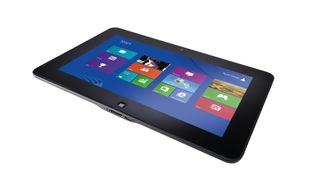
Storage is one of the big challenges with Windows 8 tablets and the 32GB provided with the entry-level Latitude 10 doesn't provide a huge amount of headroom over and above a full Windows 8 install and you'll quickly find that your drive has filled up. A full PC replacement this definitely isn't.
And while Windows 8-style apps are usually pretty lean in terms of size, once you've downloaded a few of them, you'll soon find yourself running out of room to store them all. However, a 64 GB version is available, which also features a swappable battery (it's this version Dell sent us for review).
The standard battery is a two cell 3,880mAh version, while there's a whopping 7,760mAh four-cell version you can choose. The swappable battery could be really useful, although you might not need it - even when stressed we got around seven to eight hours from the standard battery, while on idle you can expect it to last well into the teens in terms of hours. This is where the lower power Atom processor has a distinct benefit.
As you might have guessed from the name, the Latitude 10 boasts a 10.1-inch display. It has a reasonable resolution at 1,366 x 768, though if you've used one you'll really notice the difference compared to a retina display iPad, for example. It's certainly great for use with Windows 8 apps and you can swipe between things easily.
Business focused
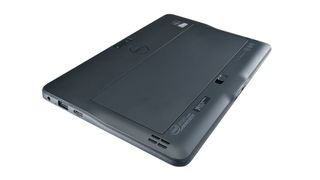
The Latitude 10 is a trifle lighter than the iPad at 648g and, as such, feels like a really pleasant device to use in the hand, with a smooth, tactile finish that won't fingerprint like many glossy finishes. You can have any colour, as long as it's black.
A dock is also available for the Latitude 10 that offers a really solid charging stand for your tablet as well as Gigabit Ethernet, HDMI and extra USB ports. A soft case is also available for it, too.
The dock hints at the business-orientated use for this device - Latitude is Dell's business mobile computing brand, after all. The business connection isn't just in terms of the name and robust appearance. The 64GB model boasts a TPM (Trusted Platform Module), which is a business-orientated feature designed to prevent unauthorised changes to the operating system.
Verdict
So can we recommend the Latitude 10? Yes, but with one key caveat - it is not a laptop replacement if you do intensive tasks of any sort. A workhorse PC it is not. We certainly wouldn't recommend its use on a desk as a PC replacement, but it is handy as a second desk screen for keeping an eye on social feeds or email. And it's handy in meetings, too.
But what it is great for is keeping in touch when you're out of the office, when you only need to check and write emails or give a quick presentation. The battery life is simply stunning.
But when buying a tablet at this price point, there are still better options out there, such as the Microsoft Surface Pro. It's a full-blown Windows 8 tablet, too (albeit with Windows 8 Pro) but it features a Core i5 processor instead. That means it really is capable of being your main display (it does still only come with 32GB of storage, however). It is alot more expensive than the Latitude 10, but the investment is worth it.
Dan (Twitter, Google+) is TechRadar's Former Deputy Editor and is now in charge at our sister site T3.com. Covering all things computing, internet and mobile he's a seasoned regular at major tech shows such as CES, IFA and Mobile World Congress. Dan has also been a tech expert for many outlets including BBC Radio 4, 5Live and the World Service, The Sun and ITV News.
Most Popular




